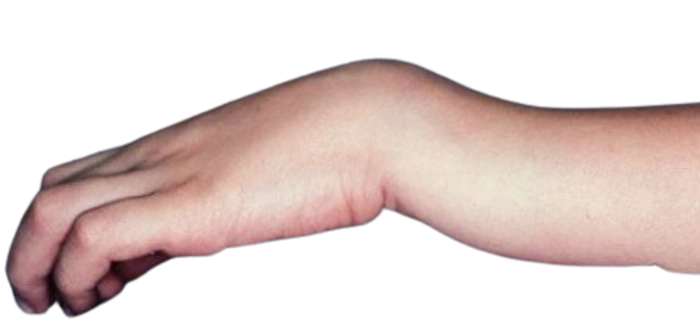Introduction
Dinner fork deformity, also known as Colles' fracture, refers to a specific type of fracture of the distal radius in the forearm, near the wrist. This injury gets its name from the characteristic appearance of the forearm and wrist, resembling the curve of an upside-down dinner fork. At Dhyan Healthcare, we understand the challenges individuals face after sustaining a Colles' fracture and are committed to providing comprehensive care and support throughout their recovery journey.
Causes and Risk Factors
Dinner fork deformity typically occurs due to:
- Fall on an Outstretched Hand (FOOSH): The most common cause, often resulting from slipping or tripping.
- Osteoporosis: Increased fragility of bones, especially in older adults, making them more susceptible to fractures.
- High-impact Trauma: Such as car accidents or sports injuries.
Symptoms
Common symptoms of a Colles' fracture include:
- Visible Deformity: The wrist may appear bent or crooked.
- Swelling and Bruising: Around the wrist and forearm.
- Pain and Tenderness: Especially when moving the wrist or gripping objects.
- Limited Range of Motion: Difficulty moving the wrist or fingers.
Diagnosis
Diagnosing a dinner fork deformity involves:
- Physical Examination: Assessing the deformity, swelling, and range of motion.
- Imaging Studies: X-rays are the primary tool to confirm the fracture and its alignment.
Treatment Options
The treatment for a Colles' fracture aims to realign the broken bone fragments, ensure proper healing, and restore function. Treatment options include:
-
Non-Surgical Treatment:
- Closed Reduction: Manipulating the bone back into place without surgery.
- Casting: Immobilizing the wrist with a cast or splint to allow proper healing. This typically lasts for 4-6 weeks.
- Pain Management: Using over-the-counter pain relievers such as ibuprofen or acetaminophen to manage discomfort.
-
Surgical Treatment:
- Open Reduction and Internal Fixation (ORIF): Surgically realigning the bone fragments and securing them with metal plates, screws, or pins.
- External Fixation: Using a frame outside the body attached to the bone with pins to maintain alignment.
Postoperative Care and Rehabilitation
Effective postoperative care and rehabilitation are crucial for optimal recovery:
-
Physical Therapy:
- Range of Motion Exercises: To restore movement in the wrist and fingers.
- Strengthening Exercises: To rebuild muscle strength and improve function.
- Manual Therapy: Techniques to reduce stiffness and improve mobility.
-
Wound Care: Keeping the surgical site clean and dry to prevent infection.
-
Regular Follow-up: Monitoring the healing process through periodic X-rays and clinical assessments.
-
Lifestyle Modifications:
- Activity Modification: Avoiding activities that put stress on the wrist until fully healed.
- Assistive Devices: Using wrist supports or braces during activities to provide additional stability.
Preventive Measures
Preventing dinner fork deformity involves:
- Fall Prevention: Ensuring safe environments, using assistive devices if needed, and practicing balance exercises.
- Bone Health: Maintaining bone density through a diet rich in calcium and vitamin D, and engaging in weight-bearing exercises.
- Protective Gear: Wearing wrist guards during high-risk activities such as sports.
Conclusion
Dinner fork deformity is a significant injury that requires prompt and effective treatment to ensure proper healing and restore function. At Dhyan Healthcare, we are committed to providing comprehensive care and support to individuals recovering from Colles' fractures. Our multidisciplinary team of healthcare professionals will guide you through every step of your journey towards recovery and improved quality of life.
For more information or to schedule a consultation, please visit our website or contact our clinic. Our team is here to help you achieve the best possible outcomes in your recovery.


